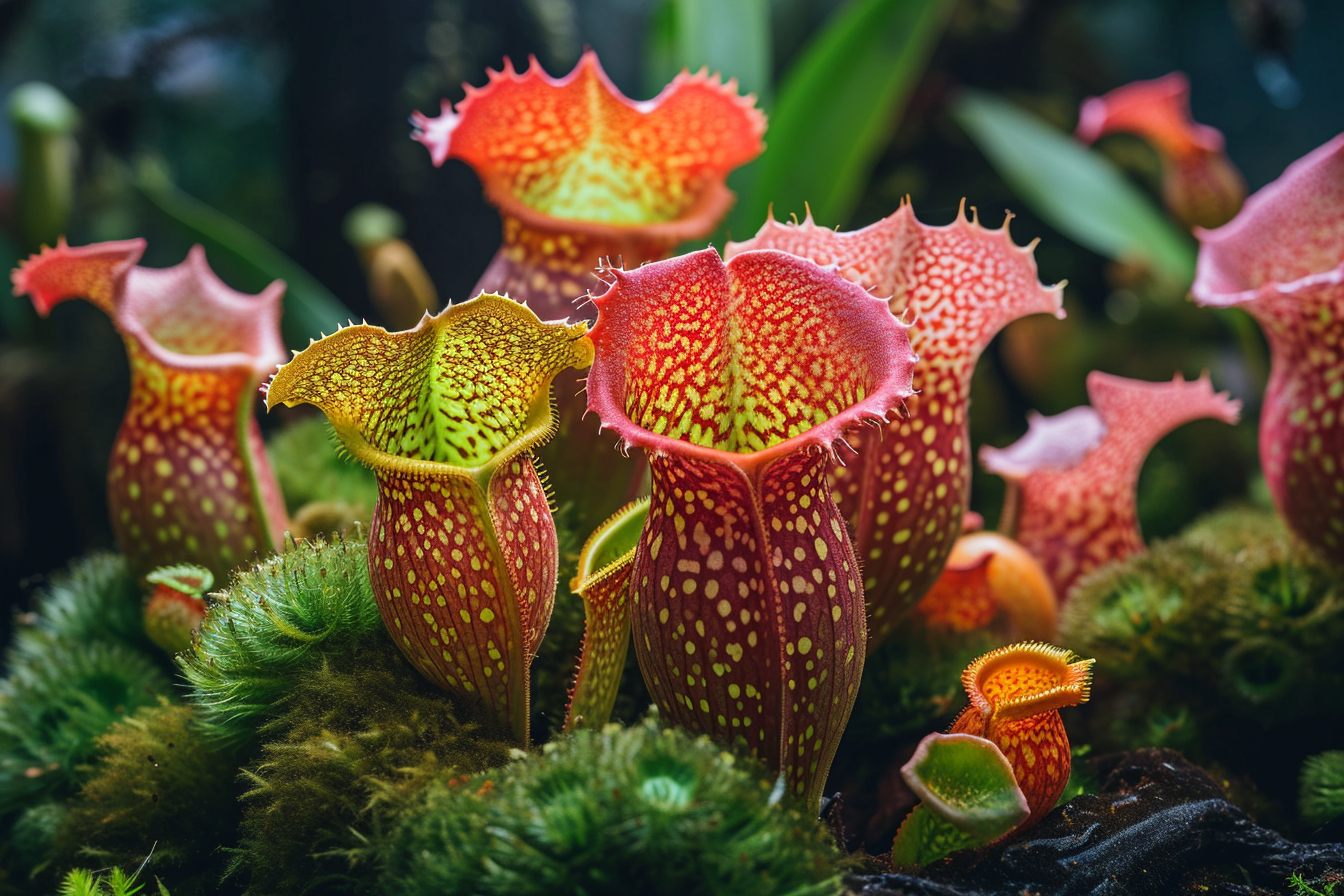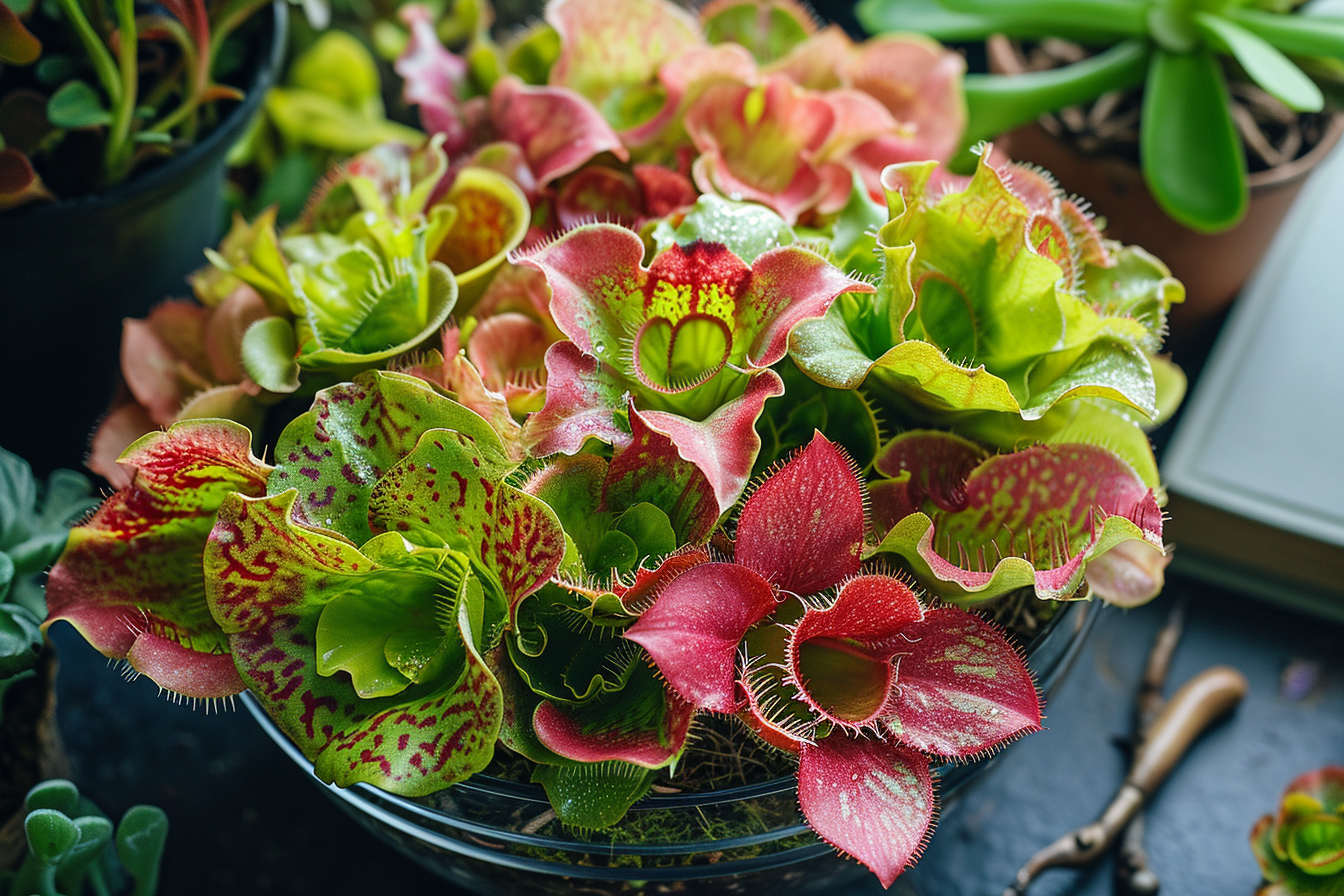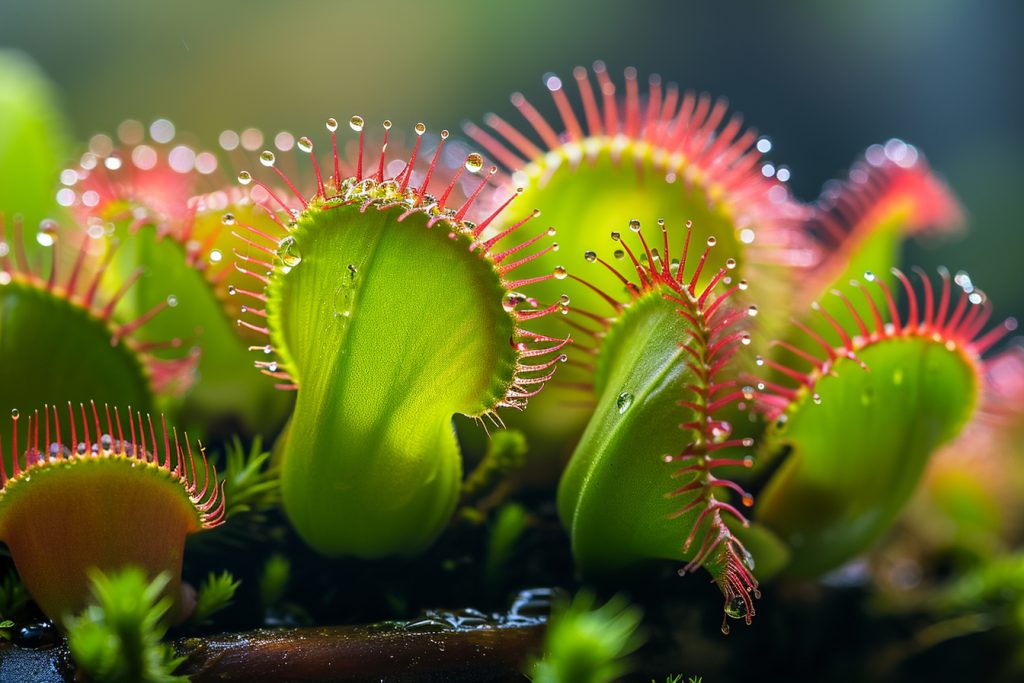Cultivating a terrarium filled with carnivorous plants is not merely an interesting hobby; it’s an immersion into a micro-ecosystem teeming with beauty and biological intrigue. Carnivorous plants, with their alluring traps and intricate feeding mechanisms, captivate plant enthusiasts and curious minds alike. But achieving a thriving terrarium environment for these unique species requires specific knowledge and attention to detail.
Understanding carnivorous plants
Before delving into terrarium creation, it is essential to have a grasp on the needs and behaviors of carnivorous plants. These botanical wonders have evolved in nutrient-poor soils, developing the ability to obtain essential nutrients by trapping and consuming insects and other small creatures. Different species have adapted various trapping mechanisms such as pitfall traps, snap traps, sticky mucilage, and suction traps.
The most common carnivorous plants include:
- Venus Flytrap (Dionaea muscipula): Known for its jaw-like snap traps.
- Pitcher Plants (Nepenthes and Sarracenia): Utilize deep cavities to drown and digest prey.
- Sundews (Drosera): Use sticky glandular hairs to ensnare insects.
- Butterworts (Pinguicula): Their leaves produce a sticky substance to catch prey.
- Bladderworts (Utricularia): They suck in prey with their bladder-like traps.
Understanding the natural habitat and behavior of these plants is critical to simulate the environment they require to thrive in a terrarium setting.
Designing your carnivorous plant terrarium
Creating a terrarium for carnivorous plants is both an art and a science. It requires a well-thought-out design and proper execution to ensure the plants not only survive but flourish.
Selecting the right container
The choice of container will influence the microclimate you are able to create. Glass containers are popular due to their transparency, which allows for easy viewing and provides adequate light. The size should be sufficient to accommodate the plants when they reach maturity, considering both height and spread.
Choosing the substrate
Select a substrate that resembles the natural growing medium of carnivorous plants. A mix of sphagnum moss and perlite is a common choice, providing the necessary drainage and slight acidity. Some carnivorous plant enthusiasts prefer a combination of peat moss and sand. Remember, these plants generally thrive in nutrient-poor substrates, so avoid adding fertilizers or compost-rich soil.
Arranging proper drainage
Proper drainage is a must to prevent root rot and other water-related issues. While a layer of gravel at the bottom can help, many carnivorous plants prefer constantly moist conditions, thus a false bottom with a water reservoir is often used to maintain consistent moisture levels.
Light and temperature: the pillars of carnivorous plant growth
Light requirements
Most carnivorous plants require ample light, replicating their natural sun-drenched habitats. Bright, indirect sunlight is ideal, although some species may tolerate direct morning or evening sun. In the absence of sufficient natural light, artificial grow lights can provide the necessary spectrum and intensity to keep your plants healthy.
Temperature and humidity
Replicating the microclimate in terms of temperature and humidity is crucial. Many carnivorous plants thrive in warm temperatures during the day and cooler at night, with high humidity levels. Monitoring the terrarium environment with a thermostat and hygrometer can help maintain consistency, ensuring your plants adapt and grow naturally.
Watering practices: a delicate balance
Overwatering is as dangerous as under-watering in a carnivorous plant terrarium. These species require consistent moisture, but not so much that the roots are perpetually submerged in water. It is generally recommended to use the tray method for watering, where water is poured into a tray and allowed to be wicked up by the plants. Always use distilled water or rainwater because tap water can contain minerals harmful to your plants.
Feeding your carnivorous plants

Surprisingly, carnivorous plants do not need to consume insects to survive—photosynthesis provides their main source of energy. However, insects and other small creatures provide supplementary nutrients. In a terrarium setting, feeding might not be necessary if the plants are catching enough prey on their own. If needed, feed them small insects or specialized carnivorous plant food sparingly.
Avoiding common pitfalls

To achieve success, there are several common mistakes that you must avoid:
- Excessive Feeding: Overfeeding can rot traps and harm the plant.
- Overcrowding: Give each plant enough space to grow and trap insects.
- Wrong Soil: Never use potting soil or nutrient-rich substrates.
- Neglecting Humidity: Moisture levels are vital in replicating the plants’ natural humid environments.
Troubleshooting health issues
Recognizing signs of distress in your plants is fundamental for maintaining a healthy terrarium. Yellowing or blackening leaves can indicate a variety of issues, from improper watering to a pest infestation. Timely intervention following the identification of such symptoms can save your plants and return them to good health.
Advancing your terrarium craft
For those who have mastered the fundamentals, there’s always more to learn and experiment with. One can explore incorporating plants from different carnivorous species that have similar habitat needs, or experimenting with terrarium designs that cycle through wet and dry seasons to mimic the plants’ natural environments.
Fostering a community of carnivorous plant enthusiasts
Sharing experiences and obtaining insights from fellow carnivorous plant hobbyists can significantly enhance your terrarium success. Online forums, local clubs, and plant societies offer a wealth of collective knowledge and support. Participation in these communities not only helps in troubleshooting but also in discovering innovative terrarium ideas and advanced care techniques.
An ongoing journey of discovery
Managing a carnivorous plant terrarium is an ongoing process of care, observation, and adjustment. Continuous learning and adaptation to your particular plants’ responses will steer you toward becoming an adept carnivorous plant keeper. Remain attentive and relish the profound sense of accomplishment that comes from nurturing these extraordinary specimens to their full potential.
As you delve deeper into the realm of carnivorous plant terrariums, you will find that this pursuit extends far beyond mere cultivation; it’s an exploration of nature’s complexity and a celebration of life’s resilience. With the foundations outlined above and a sustained commitment to learning, you are well on your way to achieving a thriving, vibrant ecosystem that showcases the fascinating world of carnivorous plants.









